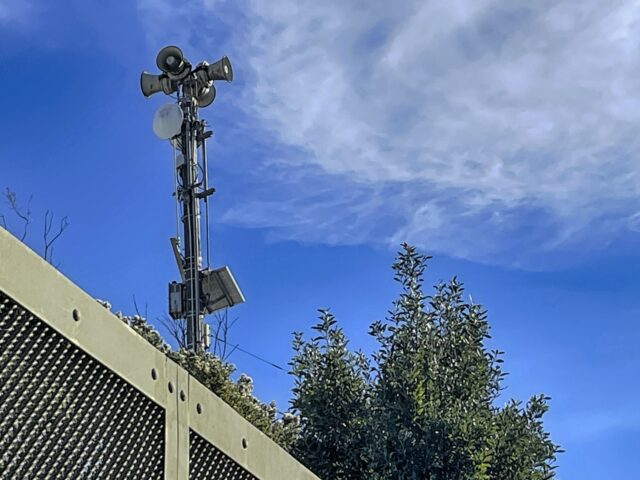A rare and brief tsunami warning tested city and county responses in Northern California after a 7.0 magnitude earthquake shook part of the state
What to know about Northern California’s rare tsunami warningBy JANIE HARAssociated PressThe Associated PressSAN FRANCISCO
SAN FRANCISCO (AP) — Northern California was under a rare and brief tsunami warning alert Thursday that tested local emergency notification systems after a 7.0 magnitude earthquake shook part of the state.
The National Weather Service canceled its alert after roughly an hour and before the tsunami was expected to arrive. In that hour, some cities and counties ordered evacuations while others relied on social media and text messages to inform people of the warning. Some people headed for higher ground, while others drove to the beach to get a better view.
People took to social media to figure out why a warning was issued and then canceled so quickly, and how the NWS determines when to send alerts. Here are answers to more questions.
What exactly is a tsunami?
The word for tsunami comes from the Japanese characters for harbor and wave. It’s a series of extremely long waves set in motion when energy from an earthquake causes the ocean floor to suddenly rise or fall, according to the National Weather Service.
How common are they in California?
Since 1800, California’s shores have been struck by more than 150 tsunamis, most of them minor, according to the California Geological Survey.
Phones buzzed Thursday when the National Weather Service issued its warning just minutes after the quake struck west of Ferndale, a small city in coastal Humboldt County.
It read in part: “You are in danger. Get away from coastal waters. Move to high ground or inland now.”
Why was there an alert if there wasn’t a large tsunami?
The National Weather Service Bay Area posted on the social platform X early Friday that the region doesn’t get tsunami alerts often and “there are lot of questions, frustration, and even some anger” about Thursday’s event.
A warning alert is the most serious of four tsunami alerts, including a watch alert for a possible tsunami and an advisory alert telling people to stay out of the water and away from the shore. The last time California received a warning alert was 2011 when an earthquake in Japan caused about $100 million in damages along the California coast.
Basically, a distant, offshore earthquake or other trigger event gives scientists more time to analyze data and confirm that a large tsunami was generated before sounding a warning.
But Thursday’s earthquake was local and close to the coast, forcing a hasty high-level alert in order to give people the maximum time to prepare as tsunami waves can travel very fast, up to 500 mph (800 kph) in the deep ocean, the NWS wrote.
“By the time we actually observe it, it may be too late, because it’s right there in our back doors,” said Dalton Behringer, a meteorologist with NWS Bay Area, on Friday.
Scientists used the time Thursday to monitor buoys and get more information on the earthquake itself, he said. They canceled the alert after seeing little sea-level change and determining the quake was a strike-slip type of temblor that shifts more horizontally and is less prone to cause tsunamis, he said.
“These things happen so infrequently for us, I think it just caught a lot of people off-guard,” he said.
How did Northern California respond?
Authorities in Eureka, the biggest city in Humboldt County, sent texts and went door-to-door to order businesses in high-risk areas to evacuate, said City Manager Miles Slattery.
He said only a small portion of the city was at risk, and Thursday’s test run showed evacuees need to work on leaving by foot, rather than by car.
In the San Francisco Bay Area, the commuter light-rail system known as BART stopped traffic in all directions through the underwater tunnel between San Francisco and Oakland for nearly an hour, and the San Francisco Zoo’s visitors were evacuated.
Responses varied as fire and police in Berkeley evacuated certain areas of the city while in San Francisco, officials sent alerts and messages on social media telling residents to stay away from water, beaches, harbors, marina docks, and piers. “Move at least one block inland,” said the San Francisco Department of Emergency Management.
Emergency personnel in vehicles with public address systems also went to make sure no one was on beaches and other low-lying areas. But some critics said San Francisco should have sounded its loud emergency sirens, which have been off-line since 2019 for repairs.
In San Mateo County, just south of San Francisco, officials considered but decided against sounding its tsunami warning sirens after receiving more comprehensive information from the NWS that any tsunami would affect coastlines north of the Golden Gate Bridge, said Michelle Durand, a spokesperson for the county.
Fire and police cleared the beaches while emergency personnel gathered to monitor the situation, she said, which “prioritized both public safety and the prevention of unnecessary panic.”

COMMENTS
Please let us know if you're having issues with commenting.